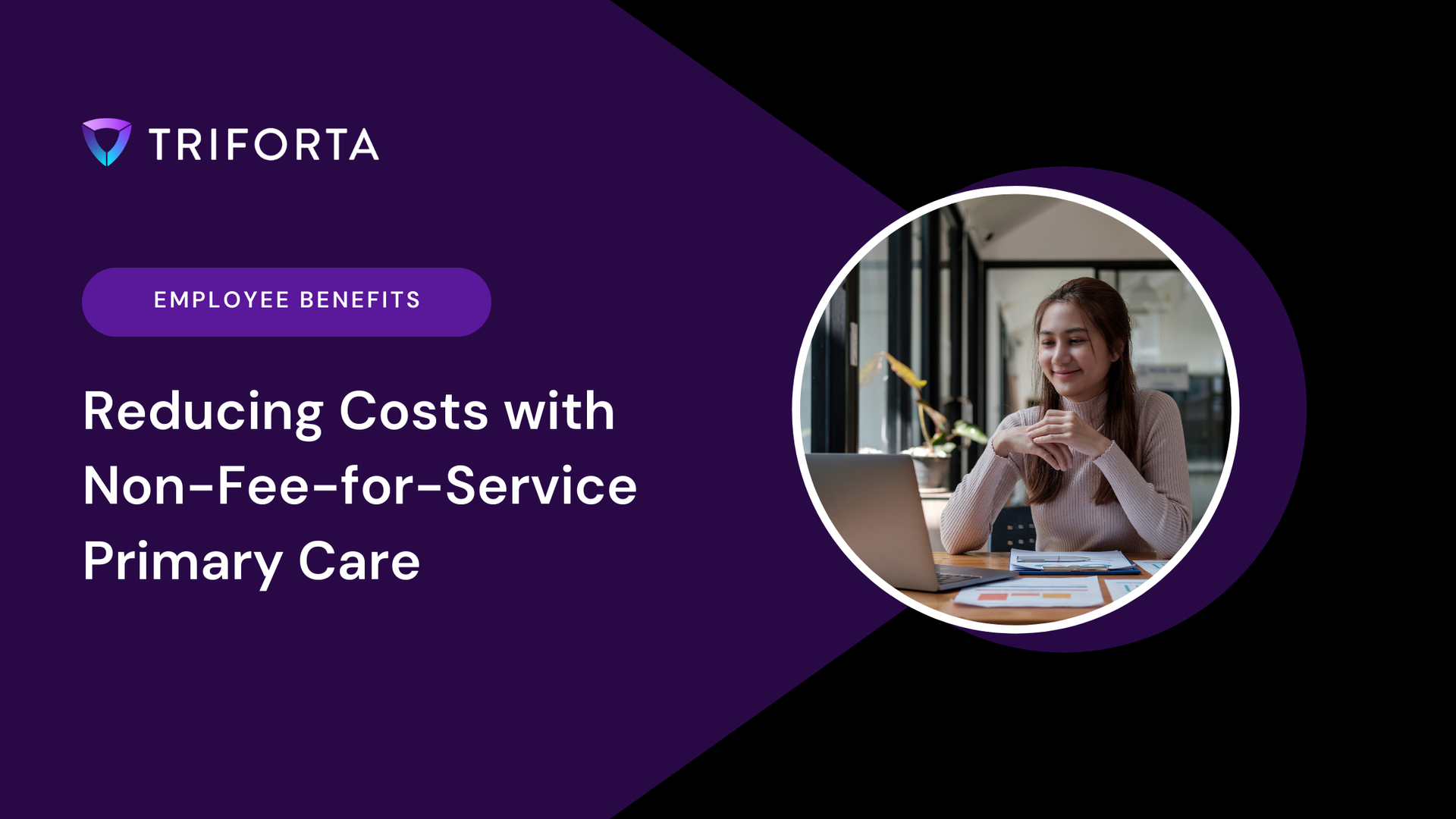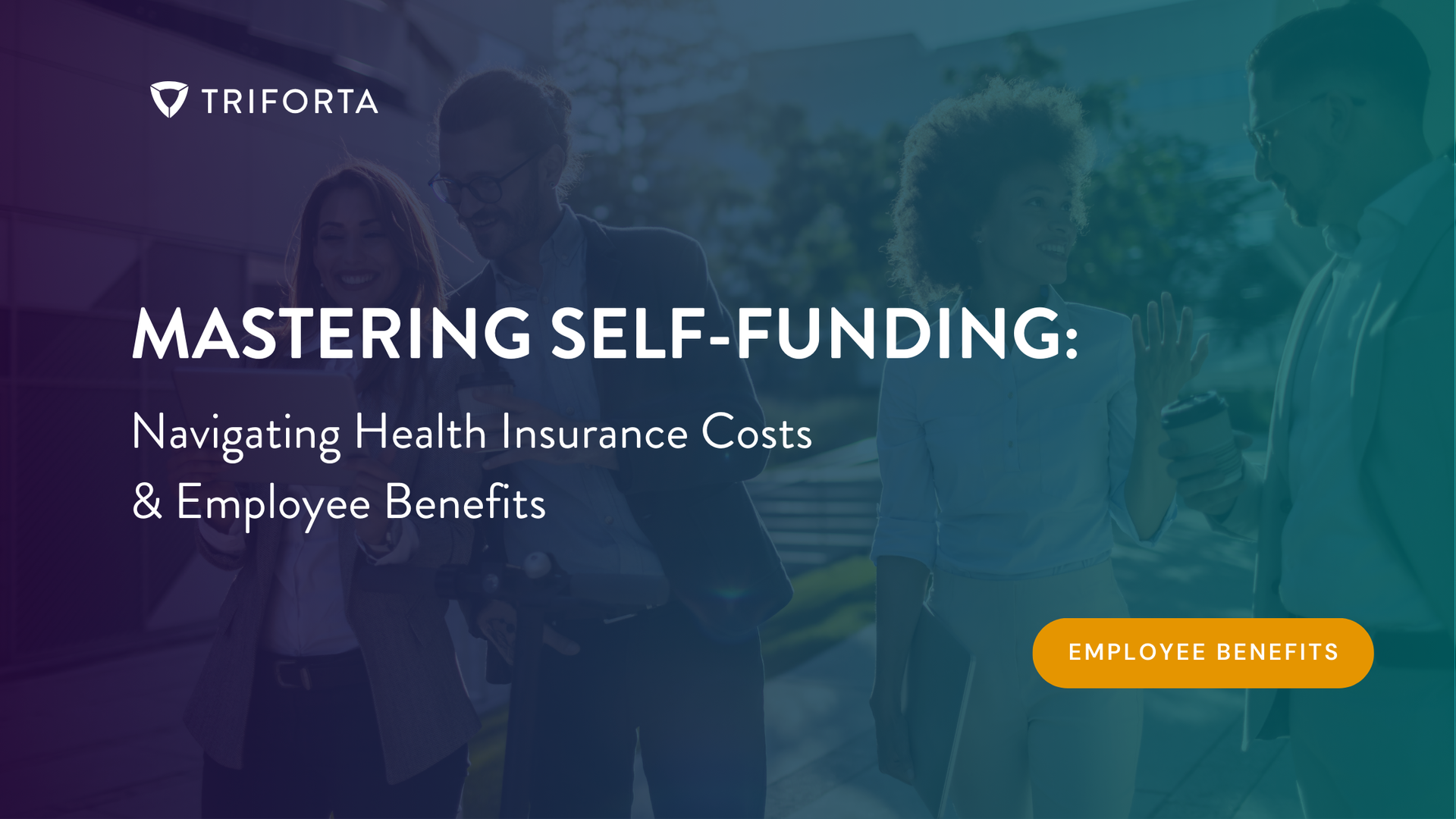The Ultimate Guide to Employee Benefits: Attract, Retain, Thrive
The Ultimate Guide to Employee Benefits: Attract, Retain, Thrive.
In today’s hyper-competitive job market, employee benefits have become more than just an added incentive—they are essential for both attracting and retaining top talent. With years of experience in human resources and talent acquisition, we've witnessed firsthand how the right benefits package can make all the difference. It's more than a recruitment tool. A well-rounded benefits program fosters a healthy, engaged, and productive workforce.
Over the last few years, the employee benefits landscape has undergone a transformation. Employees no longer see benefits as optional perks but as a core part of their employment. They expect support for their mental, physical, and financial well-being—and they expect us to take a proactive approach. The companies that understand and adapt to these evolving expectations are the ones that will thrive, while those that fail to keep up will find themselves struggling to attract and retain talent.
This guide will delve into the importance of employee benefits, explore various types of benefits, and, most importantly, show you how your company can craft a benefits strategy that stands out. Leveraging insights from our Benefits Playbook, we’ll provide actionable steps to not only offer great benefits but also optimize costs in the process.
The Importance of Employee Benefits
Employee benefits are no longer just a way to sweeten the deal during hiring negotiations—they are a necessity for modern workplaces. In today’s business landscape, companies with strong benefits programs are more attractive to job seekers, while companies without them often struggle to fill positions. A well-crafted benefits package isn’t just about competitive compensation; it’s about creating an environment where employees can thrive both personally and professionally.
But it’s not just about offering more benefits—we help employers reimagine their health insurance and benefits programs by eliminating waste and inefficiencies in traditional plans. Our strategy is not only to offer superior benefits but to do so while cutting costs for both employers and employees. This approach directly aligns with the growing demand from employees for employers who prioritize their well-being in tangible, cost-effective ways.
Ready to enhance your benefits package?
Contact us today to learn how we can help.
Attracting Top Talent
Having the right benefits package in place is a crucial step in attracting top talent. Over the years, I’ve observed many candidates turn down high-paying offers for companies that provide better benefits. This is particularly true in today’s market where health care costs are a significant concern for most workers.
According to recent research, 88% of job seekers prioritize health, dental, and vision insurance over salary when evaluating job offers. This is where we step in. By optimizing health insurance plans and reducing out-of-pocket costs through non-profit models, we allow companies to offer superior health benefits that stand out in the marketplace. Prospective employees can immediately see the value of a company’s commitment to their well-being when they encounter comprehensive, affordable health insurance plans.
In addition to health coverage, flexibility in benefits is also critical to attracting top-tier talent. Offering benefits that go beyond the basics, such as flexible work arrangements or wellness programs, signals that your company understands the diverse needs of its workforce.
Improving Employee Retention
While attracting talent is a vital part of building a strong workforce, retaining that talent is equally important. The longer an employee stays with a company, the more value they bring, both in terms of their experience and the reduced costs associated with turnover. Employee retention strategies have become a focus for companies that want to save on recruitment and training costs.
Data shows that employees who are satisfied with their benefits are 70% more likely to remain loyal to their employer. Our Playbook emphasizes this by offering solutions that not only reduce employer costs but also enhance employee satisfaction with their benefits. By lowering out-of-pocket expenses and offering customizable plans, employees feel valued and secure, which increases their loyalty and decreases turnover.
Retaining employees also means fostering a positive company culture. Employees who feel their well-being is prioritized are more likely to engage with the company’s goals and contribute positively to its culture. A strong benefits package, especially one that includes financial wellness programs and health coverage, plays a significant role in creating a supportive and thriving workplace culture.
Enhancing Productivity and Engagement
Employee benefits do more than just attract and retain talent—they are also key to enhancing productivity and engagement. When employees feel secure in their health, financial stability, and personal lives, they are more likely to be productive at work. Studies consistently show that employees who feel supported by their employer are less stressed, more focused, and more engaged in their work.
For example, our approach to health insurance, which reduces out-of-pocket costs and eliminates unnecessary premiums, allows employees to access the healthcare they need without worrying about financial strain. This in turn reduces absenteeism and boosts productivity. Similarly, offering flexible work arrangements and wellness programs gives employees the freedom to balance their personal and professional lives more effectively, leading to higher levels of engagement.
Learn how our benefits solutions can enhance productivity and engagement.
Contact us today.
Types of Employee Benefits
A successful benefits package is not one-size-fits-all. It must cater to the diverse needs of employees, ensuring that they feel supported in all aspects of their lives. The following are key types of benefits that modern companies should consider, many of which align with our cost-saving strategies:
- Health Insurance: Health insurance remains the cornerstone of any comprehensive benefits package. Offering competitive health insurance not only attracts top talent but also boosts employee satisfaction and retention. We help companies optimize their health insurance plans by eliminating profit-driven inefficiencies, providing direct contracts with healthcare providers, and offering plans that reduce both premiums and out-of-pocket expenses for employees.
- Retirement Plans: Retirement plans, such as 401(k) accounts with matching contributions, are essential for helping employees plan for their future. The ability to offer matching contributions makes a company more attractive to potential employees and can help retain existing talent. Through our cost-saving measures, companies can afford to increase their contributions to retirement plans without compromising other aspects of the benefits package.
- Paid Time Off (PTO): Paid time off (PTO) is another critical component of a strong benefits package. Offering vacation days, sick leave, and personal days helps employees recharge and maintain a healthy work-life balance. Some companies are now moving toward unlimited PTO policies, which empower employees to take time off as needed without worrying about running out of days. Our Playbook advises balancing generous PTO offerings with strategic healthcare savings, ensuring the overall package remains competitive and cost-effective.
- Affordable Life and Disability Insurance: Life and disability insurance offer financial security for employees and their families in the event of unforeseen circumstances. Although these benefits are often overlooked, they are highly valued by employees when provided. By using our approach to cut unnecessary costs in other areas, companies can afford to offer more generous life and disability insurance policies without straining their budget.
- Flexible Work Arrangements: Flexible work arrangements, including remote work options and flexible scheduling, have become more common since the pandemic. Many employees now expect flexibility in their work schedule, and companies that can offer this benefit are more likely to attract and retain talent. According to a study by Qualtrics, 93% of employees believe the way we work has changed forever. We encourage companies to adopt flexible work arrangements where possible, as part of a broader strategy to improve employee satisfaction without increasing costs.
- Wellness Programs: Wellness programs that address employees' physical, mental, and emotional well-being are increasingly popular. These can include gym memberships, mental health support, smoking cessation programs, and more. By reducing healthcare costs through our Playbook, companies can reinvest those savings into wellness programs, creating a healthier, more engaged workforce.
Increasing Personalization and Flexibility
The modern workforce is comprised of four or five generations of workers from various backgrounds. In 2023, many employers struggled to find a benefits plan that satisfied their entire workforce. According to the Life Insurance Marketing and Research Association’s 2023 Workforce Benefits Study, nearly a third of all employers said that meeting the needs of their multigenerational workforce was a primary challenge. In 2024, employers will increasingly offer personalized and flexible benefits to address the unique needs and expectations of individual employees. The following are popular options for benefits customization: what they want their employees to do differently due to the communication.
- Flexible spending accounts
- Flexible work arrangements
- Customized retirement plans
- Convertible paid time off
- Domestic partner benefits
- Broader medical coverage
- Expanded leave
- Diverse wellness programs
- Personalized learning and
- development opportunities
Emerging Trends in Employee Benefits
Employee benefits are constantly evolving, and companies that stay ahead of the curve will have an advantage in attracting and retaining top talent. Here are some of the latest trends that are shaping the future of employee benefits:
- GLP-1 Drug Coverage Decisions: GLP-1 drugs like Ozempic and Wegovy, traditionally used for type 2 diabetes, have gained popularity for weight management. This trend has led many employers to evaluate whether to include these drugs in their health plans. The debate centers on balancing the health benefits for employees with the high costs of covering these drugs, as well as the unknown long-term effects. According to recent surveys, 43% of employers plan to cover GLP-1 drugs in 2024, compared to 23% in the previous year. Providing access to these medications could improve employee health outcomes and be used as a recruitment and retention tool.
- Student Loan Assistance: As the cost of higher education continues to rise, more employees are looking for companies that offer student loan assistance. This benefit is particularly appealing to younger employees who are burdened with student debt.
Companies that adopt our cost-saving strategies may find it easier to offer this emerging benefit, which can differentiate them from competitors.
- Pay Increases Meeting or Exceeding Inflation: Over the last few years, salary raises have not kept pace with inflation. However, 2024 is expected to bring a change, with wage growth projected to meet or even surpass inflation rates. With inflation projected at around 2.8%, many employers are budgeting for pay increases between 3.8% and 4%. Ensuring that salary adjustments align with inflation is crucial for maintaining employee satisfaction and reducing turnover
- Financial Wellness Programs: Financial wellness programs are becoming increasingly important as employees look for guidance on managing their finances. These programs go beyond traditional retirement planning to include budgeting, debt management, and saving for future goals. By implementing our Playbook and reducing unnecessary costs in healthcare, companies can allocate more resources toward offering comprehensive financial wellness programs. These programs not only improve employees' financial security but also reduce their stress, leading to a more focused and engaged workforce.
- Mental Health Support: Mental health support is no longer a fringe benefit—it is now a critical component of a comprehensive benefits package. The pandemic highlighted the importance of mental health, and many companies are now offering more robust mental health benefits, including access to teletherapy, mental health days, and stress management programs. We encourage employers to reinvest savings from healthcare cost reductions into mental health support initiatives, allowing employees to access care without the burden of high out-of-pocket expenses. This approach not only improves the well-being of employees but also increases productivity and reduces absenteeism.
- Expanding Family-Building and Reproductive Health Benefits: Reproductive healthcare benefits became a key issue for employers in 2023 after the U.S. Supreme Court’s Dobbs v. Jackson Women’s Health Organization decision ended federal protections for abortion rights and permitted states to implement their regulations. Numerous employers will continue to expand reproductive health benefits in 2024 to meet employee needs and remain competitive.
Additionally, more employers are offering family-building benefits, as they have proven to be highly valued among employees who are looking to start or build their families. The impact of these benefits also often extends beyond affected individuals to make employees feel welcomed and supported in the workplace, improving engagement, productivity, and retention. In the next year, many employers are expanding benefits offerings to include the following:
- Paid parental and adoption leave
- Childcare subsidies
- Flexible scheduling and remote and hybrid work options
- Surrogacy benefits
- Family planning assistance
- High-risk pregnancy care
- Pregnancy, lactation, postpartum, and menopause support
- Testosterone deficiency treatments
- Employers providing legal reproductive care benefits should assess the implications of these offerings as reproductive health care laws continue to evolve.
- Personalized Benefits: In today’s diverse workforce, a one-size-fits-all approach to benefits simply doesn’t work. More and more companies are offering personalized benefits, allowing employees to choose the benefits that matter most to them. This approach, often referred to as “cafeteria plans,” ensures that employees get the coverage they need without wasting resources on benefits they don’t value. With our cost-saving strategies, companies can afford to offer more flexibility and personalization in their benefits packages without increasing overall costs.
- Renewed Interest in Pensions: As companies strive to offer more secure retirement benefits, some are reintroducing pension plans, which had largely fallen out of favor in the 401(k) era. The return of pension plans is being considered as a way to provide guaranteed retirement income and to stand out in a competitive job market. Companies like IBM have already made this shift, and other organizations are closely watching this trend.
How to Create an Effective Employee Benefits Strategy
We’ve established that employee benefits are essential for attracting, retaining, and engaging top talent. But how do you create a benefits strategy that works for your specific organization? The key is balancing the needs of your employees with the financial realities of running a business. We provide a clear, actionable framework for achieving this balance through our three-step approach, which focuses on understanding the economic cycle of health insurance, limiting the effect of profit-driven carriers, and enhancing coverage.
Here are some steps to consider when creating an effective benefits strategy:
- Assess Your Workforce: Begin by understanding the demographics and needs of your employees. Are they mostly younger workers who might prioritize student loan assistance and mental health support? Or are they more experienced professionals who value retirement planning and comprehensive health coverage? The more you know about your workforce, the better you can tailor your benefits package to meet their needs.
- Survey Your Employees: Don’t assume you know what benefits your employees want. Conduct surveys to ask them directly which benefits they value most. This will help you prioritize your offerings and avoid spending money on benefits that go unused.
- Benchmark Against Competitors: It’s important to know what other companies in your industry are offering. Conduct a competitive analysis to see how your benefits stack up. With our strategies, you can offer competitive benefits at a lower cost, giving you an edge in attracting and retaining top talent.
- Set a Budget: Determine how much your company can afford to spend on employee benefits. With our approach to cutting unnecessary healthcare costs, you’ll likely find that you can offer better benefits without exceeding your budget.
- Choose a Mix of Benefits: A well-rounded benefits package should include health, financial, and lifestyle benefits. Use the insights you’ve gathered from your employee surveys and competitive benchmarking to choose the right mix of benefits for your workforce.
- Communicate Effectively: Even the best benefits package won’t make an impact if employees don’t know how to use it. Make sure you have a clear communication strategy to educate employees about their benefits, how to access them, and the value they provide. Regularly remind employees of their benefits, especially during open enrollment and life events.
- Review and Adjust Regularly: The needs of your workforce will change over time, and your benefits package should evolve to reflect those changes. Regularly review your benefits program and make adjustments as needed to ensure it continues to meet the needs of your employees and aligns with your business goals.
The ROI of Employee Benefits
Investing in employee benefits isn’t just about doing the right thing for your employees—it’s also a smart business decision. A comprehensive benefits package can yield substantial returns in the form of increased productivity, reduced turnover, and a more engaged workforce.
When you partner with us, you’ll not only provide superior healthcare options but also enjoy significant cost savings. For instance, by eliminating profit-driven inefficiencies in traditional insurance models, we help companies lower their premiums and out-of-pocket expenses, making benefits more affordable for both employers and employees.
Here are some examples of the potential return on investment (ROI) for key employee benefits:
- Health Insurance: Offering high-quality health insurance through our model can reduce absenteeism by ensuring employees have access to the care they need without financial barriers. This leads to increased productivity and lower healthcare costs overall.
- Retirement Plans: Offering robust retirement plans with employer matching can improve long-term employee loyalty and financial security. Employees who feel secure about their future are more likely to stay with the company, reducing turnover and the costs associated with recruitment and training.
- Wellness Programs: Investing in wellness programs can lower healthcare costs over time by improving the health of your workforce. Healthy employees are less likely to take sick days and more likely to be engaged and productive at work.
- Flexible Work Arrangements: Offering flexible work arrangements can increase job satisfaction and help employees achieve a better work-life balance. This leads to higher engagement, reduced burnout, and increased employee retention.
Common Pitfalls to Avoid
Creating a successful benefits program requires careful planning and consideration. Even the best intentions can fall short if certain pitfalls aren’t avoided. Here are some common mistakes companies make when building their employee benefits programs, and how we can help you avoid them:
- Offering Benefits Without Employee Input: One of the biggest mistakes companies make is assuming they know what benefits their employees want. As mentioned earlier, it’s crucial to survey your employees to understand their preferences. We emphasize the importance of tailoring benefits to the needs of your workforce while optimizing costs.
- Poor Communication: Even the best benefits package is useless if employees don’t understand how to access or use their benefits. We encourage clear, consistent communication with employees about the value of their benefits and how to take full advantage of them.
- Ignoring Changing Needs: The needs of your workforce will change over time, and your benefits package needs to evolve to reflect those changes. We recommend regularly reviewing your benefits program and making adjustments as necessary to stay competitive.
- Focusing Solely on Cost: While it’s important to manage costs, focusing solely on offering the cheapest benefits can backfire. Employees will notice if your benefits aren’t up to par with competitors, and this can lead to higher turnover and decreased productivity. We help companies strike the right balance between cost and value, ensuring that employees receive high-quality benefits without breaking the bank.
The Future of Employee Benefits
As we move toward the end of the decade, employee benefits will continue to evolve. Companies that stay ahead of emerging trends will have a competitive edge in attracting and retaining top talent. We are committed to helping companies stay at the forefront of benefits innovation by offering flexible, cost-effective solutions that meet the changing needs of today’s workforce.
Conclusion
Employee benefits are not just a cost to the company—they are an investment in your workforce and your company’s future success. A strong benefits package can attract top talent, improve retention, increase productivity, and boost overall employee engagement.
By partnering with us, you can create a benefits program that not only provides superior coverage for your employees but also saves your company money. Our innovative approach to health insurance and benefits optimization helps companies reduce costs, eliminate inefficiencies, and offer comprehensive, customizable benefits packages that meet the needs of today’s diverse workforce.
Want to learn more about creating an effective employee benefits strategy? Contact us today for a personalized consultation and take the first step toward building a benefits program that sets your company apart from the competition.












